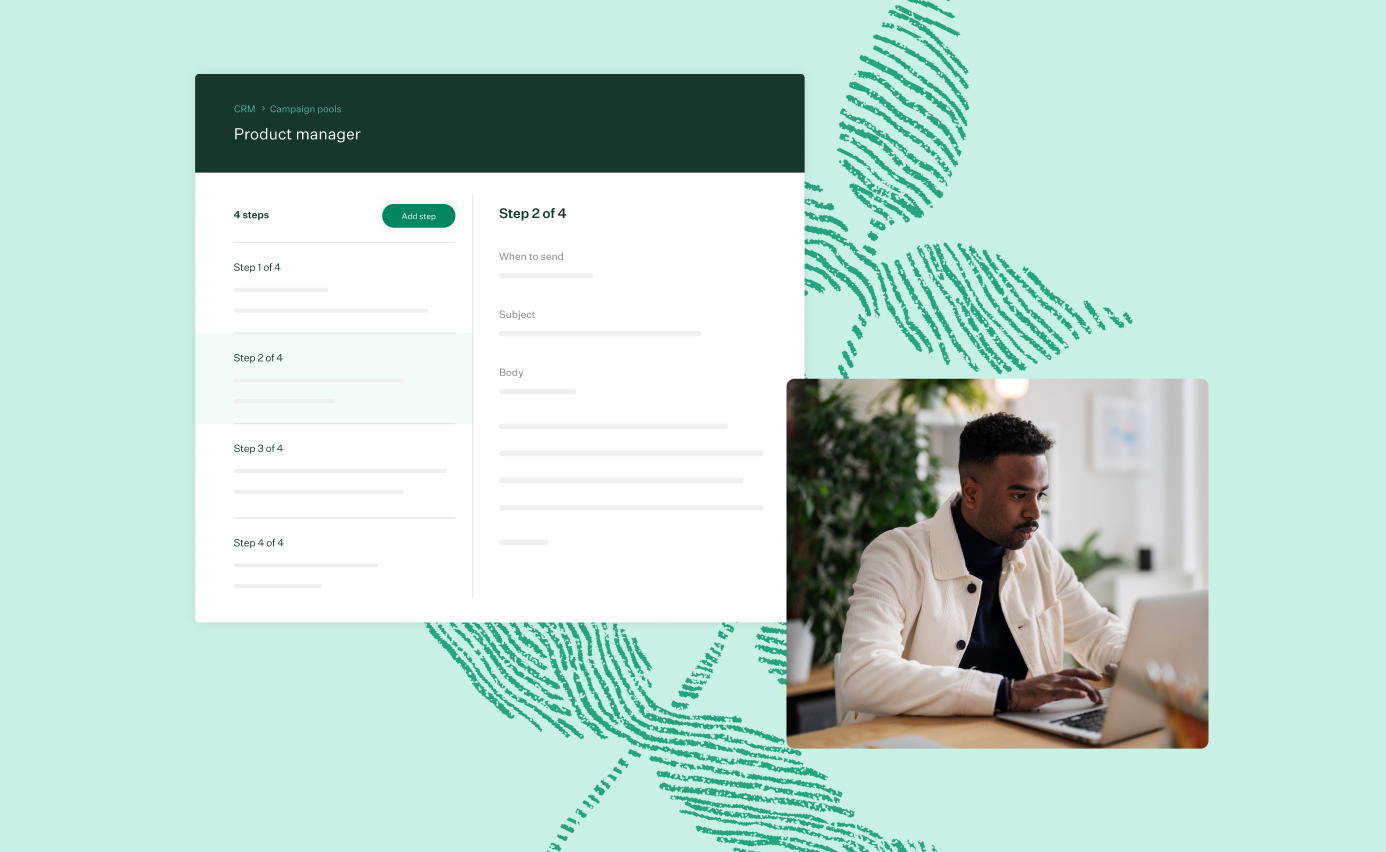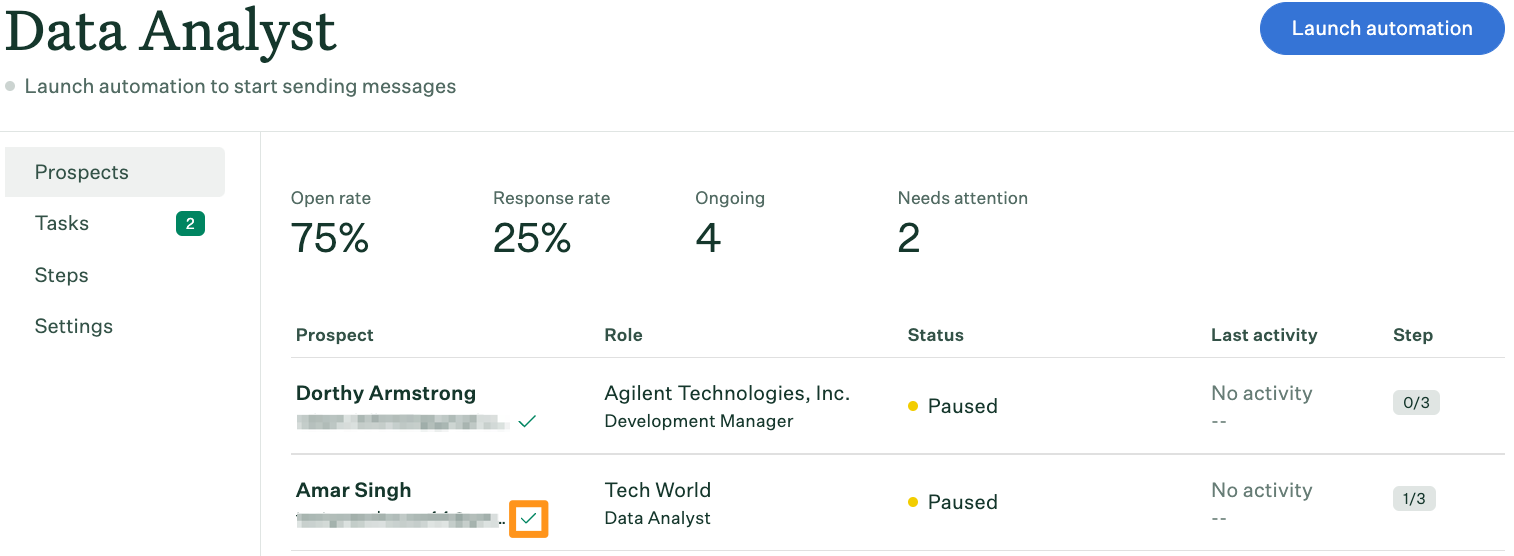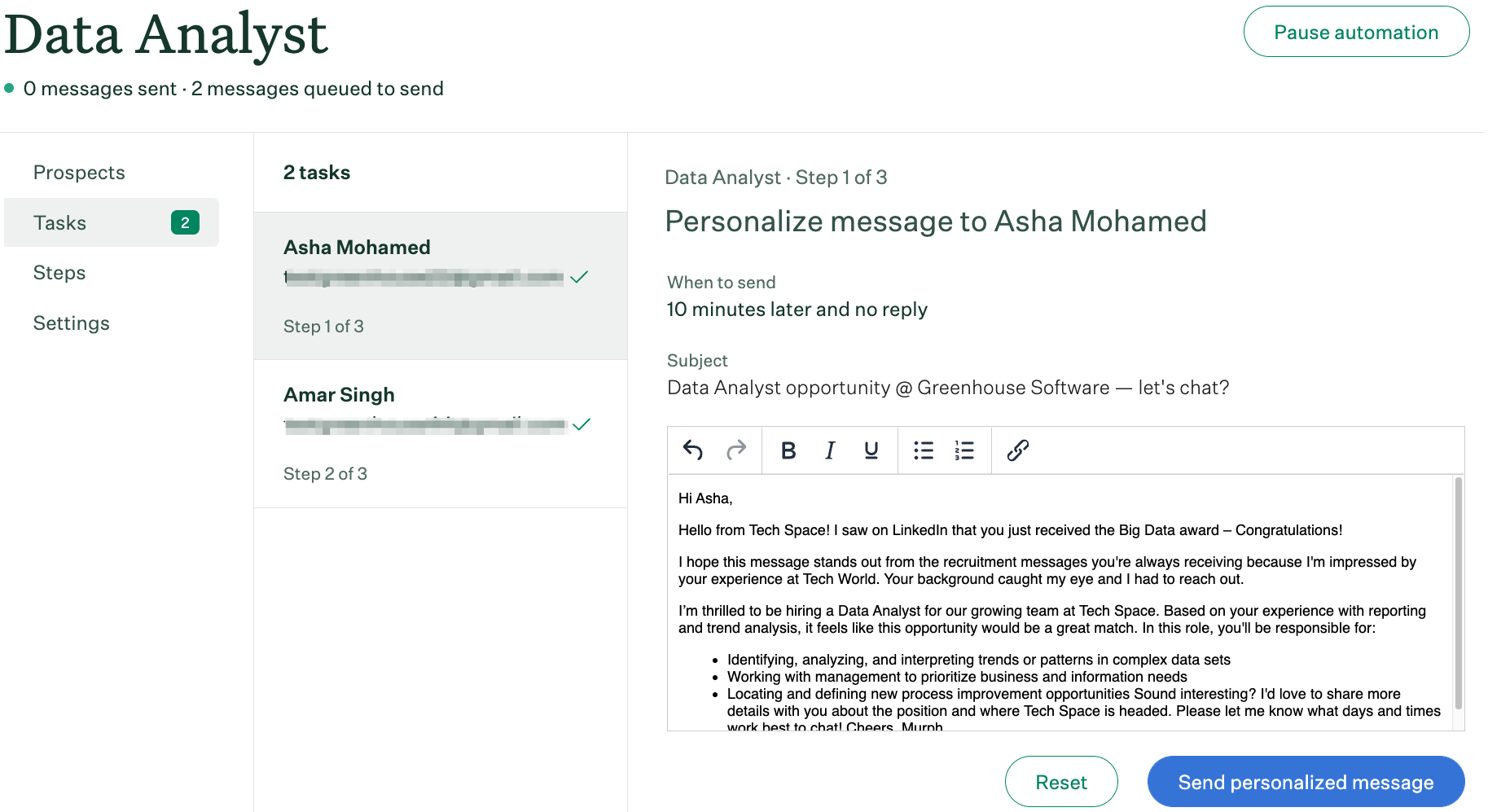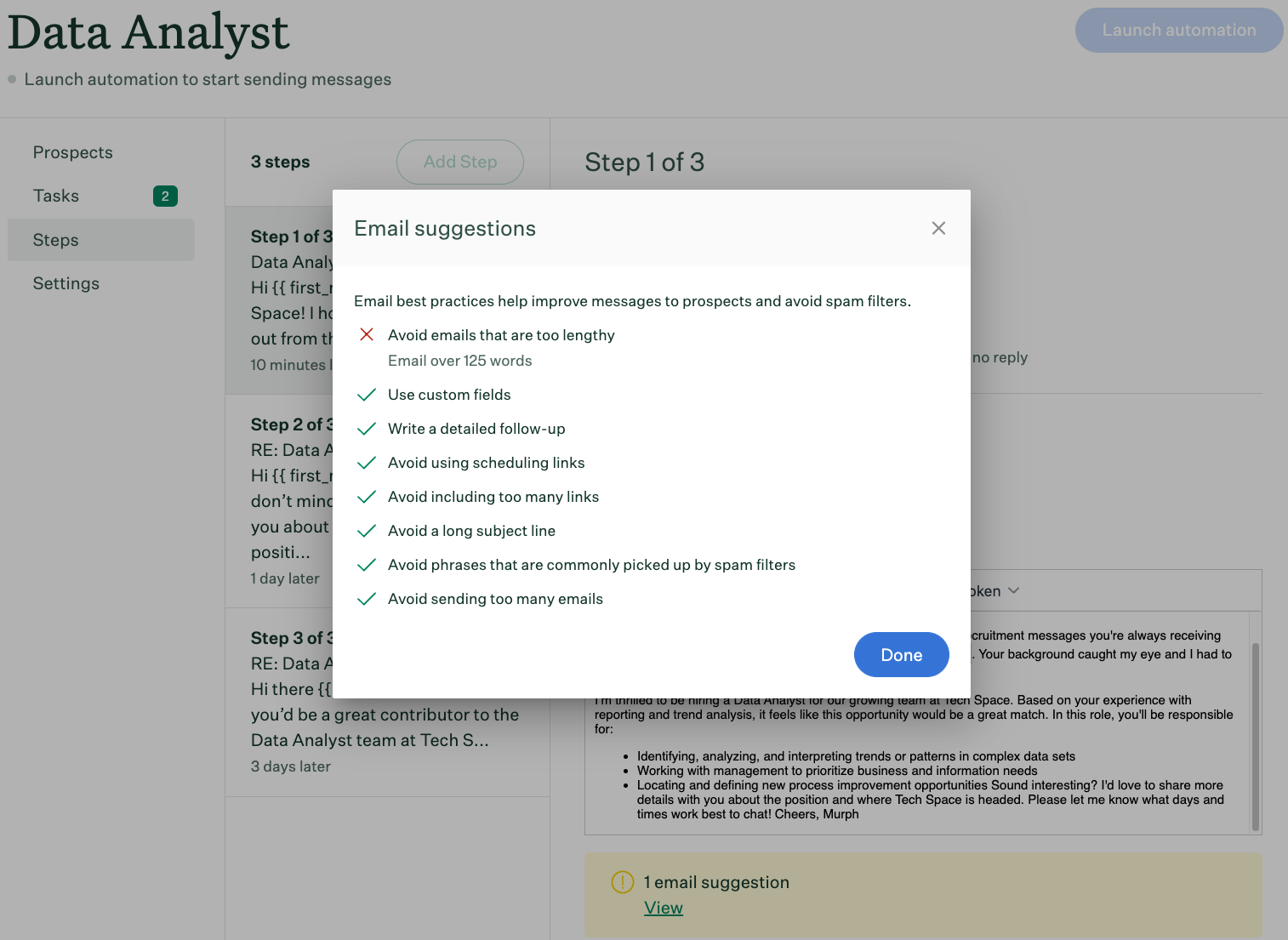
We understand the importance of a successful email campaign and protecting your domain reputation when it comes to sourcing efforts.
This article covers the various ways campaign pools are designed to help email deliverability and general suggestions you can take to maximize your open and reply rate.
Email address verification
Every email address added to your campaign pool is validated to ensure the data is accurate prior to sending emails to the prospect. This prevents bounced emails which can hurt your domain reputation.
Once the prospect is verified, a green checkmark appears next to their email address in the campaign pool.
 Campaign pool delivery limits
Campaign pool delivery limits
We encourage quality over quantity when capturing prospect interest through email outreach.
Greenhouse Recruiting limits the number of messages sent through the email address associated with Sourcing Automation to 200 emails per day with a 100-second wait time between each email. This prevents triggering spam filters that could hurt your domain reputation.
Learn more about the campaign pool default settings here.
Set up your email security
Greenhouse recommends setting up DomainKeys Identified Mail (DKIM) and Sender Policy Framework (SPF) records, which play an important part in your email deliverability.
DKIM and SPF records are verification techniques to spoof your email and ensure any outgoing emails sent from your account have not been modified in transit to the recipient. Adding these records help prevent your emails from bouncing and landing in the spam folder.
Click here to learn how to set up email security for your Google or Outlook 365 provider.
Review Greenhouse's outbound sourcing eBook
When developing your outbound sourcing strategy, email is one of the most familiar, reputable, and effective approaches to communicating with prospective candidates. Since top prospects likely receive several emails a day, they can distinguish between high-quality, targeted emails and spam emails.
We've compiled a list of best practices and templates to help you build an optimal outbound sourcing strategy.
Our eBook covers:
- How to create engaging email outreach content and sourcing email templates to set you up for success
- How to structure and optimize sourcing outreach campaigns using best practices
- Common mistakes and what to watch out for when sourcing
Visit our website to access the eBook, Outbound sourcing: Best practices for talent leaders.
Use different email templates
We suggest periodically changing your email templates across campaign pools to distinguish your emails and prevent them from being marked as spam.
Our email templates and best practices article can assist you in building a quality email campaign.
Personalize your email
Personalized outreach is a great way to successfully engage with passive talent. To improve your open and reply rates, we recommend personalizing each email sent to your prospect.
As you construct your personalized message, avoid starting the first email with cold selling as this can deter prospects from engaging with you further. Instead, find ways to engage such as highlighting a shared interest or acknowledging the prospect's achievements.

Use the following resources to learn how to enable and send personalized emails:
Use email coach
Email coach is a tool built into the campaign pool that performs a real-time scan of your email. As you edit the email, the scan checks for potential flags such as adding too many images, using a long subject line, and phrases that are likely to trigger spam filters.
Incorporating these suggestions can help improve your message and email deliverability.
Click here to learn more about building emails in a campaign pool.

FAQs
What is considered good and bad deliverability results?
| Open rate | Reply rate | |
| High (good) | 50% or higher | 10% or higher |
| Low (bad) | 20% or lower | 2% or lower |